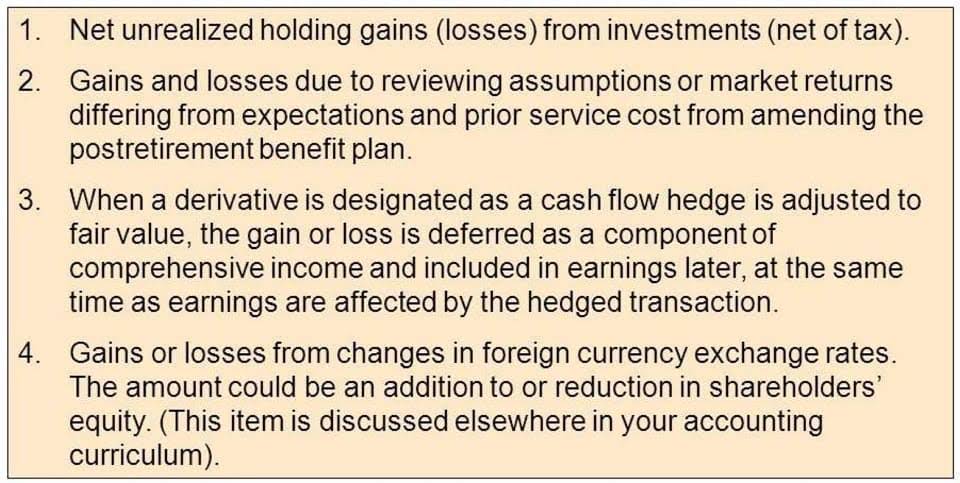4 1 Cash versus Accrual Accounting Principles of Finance

That individual’s taxable income is $50,000 with an effective tax rate of 13.88%, giving an income tax payment of $6,939.50 and NI of $43,060.50. Cash increases (debit) and Accounts Receivable decreases (credit) for the full amount owed. If the customer made only a partial payment, the entry would reflect the amount of the payment. For example, if the customer paid only $75,000 of the $100,000 owed, the following entry would occur.
1 Explain the Revenue Recognition Principle and How It Relates to Current and Future Sales and Purchase Transactions
The cash method is just as the name implies—it records transactions only when cash flows. This method is most commonly used by small businesses that deal primarily in cash transactions. The other method, called the accrual method, records transactions when they occur, net income recognition always increases: rather than waiting for cash to be accumulated. Using the accrual method, we match cash inflows and the outflows required to generate them. It looks like you just follow the rules and all of the numbers come out 100 percent correct on all financial statements.

Cash- or Accrual-Basis Accounting?

Considering this amount allows accountants to provide, in a timely manner, relevant and complete information to stakeholders. On the income statement, depreciation is usually shown as an indirect, operating expense. It is an allowable expense that reduces a company’s gross profit along with other indirect expenses like administrative and marketing costs. Depreciation expenses can be a benefit to a company’s tax bill because they are allowed as an expense deduction and they lower the company’s taxable income. This is an advantage because, while companies seek to maximize profits, they also want to seek ways to minimize taxes.
Earnings Management
- Net income appears on a company’s income statement and is an indicator of a company’s profitability.
- It looks like you just follow the rules and all of the numbers come out 100 percent correct on all financial statements.
- The $100 is deducted from $500 to get a final debit balance of $400.
- Certain expenses such as rent, insurance, and building costs are called period expenses .
- The lost value is recorded on the company’s books as an expense, even though no actual money changes hands.
Earnings per share (EPS) are calculated using a business’s net income. These numbers should always be reviewed by investors to ensure that they are accurate and not inflated or misleading. Yarilet Perez is an experienced multimedia journalist and fact-checker with a Master of Science in Journalism. She has worked in multiple cities covering breaking news, politics, education, and more. Her expertise is in personal finance and investing, and real estate.
It is an estimated expense that is scheduled rather than an explicit expense. Depreciation can be somewhat arbitrary which causes the value of assets to be based on the best estimate in most cases. A negative net income means a company has a loss, and not a profit, over a given accounting period. While a company may have positive sales, its expenses and other costs will have exceeded the amount of money taken in as revenue. Net income is calculated by deducting a company’s expenses, and depreciation is one of those expenses.


What Can Cause Negative Net Income With Positive Cash Flows?
To calculate net income for a business, start with a company’s total revenue. From this figure, subtract the business’s expenses and operating costs to calculate the business’s earnings before tax. Revenue accounting is fairly straightforward when a product is sold and the revenue is recognized when the customer pays for the product. However, accounting for revenue can get complicated when a company takes a long time to produce a product. As a result, there are several situations in which there can be exceptions to the revenue recognition principle. This is posted to the Interest Receivable T-account on the debit side (left side).
Revenue Recognition: What It Means in Accounting and the 5 Steps
- Net income (NI) is known as the bottom line, as it appears as the last line on the income statement once all expenses, interest, and taxes have been subtracted from revenues.
- Generally accepted accounting principles require that revenues are recognized according to the revenue recognition principle, which is a feature of accrual accounting.
- With an adjusting entry, the amount of change occurring during the period is recorded.
- Revenue is typically recognized when a critical event has occurred, when a product or service has been delivered to a customer, and the dollar amount is easily measurable to the company.
- Revenue recognition is a generally accepted accounting principle (GAAP) that identifies the specific conditions in which revenue is recognized and determines how to account for it.
If the company has provided the product or service at the time of credit extension, revenue would also be recognized. This is posted to the Unearned Revenue T-account on the debit side (left side). You will notice there is already a credit balance in this account from the January 9 customer payment.
Accrual-basis accounting is required by GAAP because it typically provides a better sense of the financial well-being of a company. Accrual-based accounting information allows management to analyze a company’s progress, and management can use that information to improve their business. Accrual accounting is also used to assist companies in securing financing because banks will typically require a company to provide accrual-basis financial income statements. The Internal Revenue Service requires businesses to report using accrual-basis information when preparing tax returns. In addition, companies with inventory must use accrual-based accounting for income tax purposes, though there are exceptions to the general rule.


These accounts will be temporary, meaning that they will begin with a zero balance and end with a zero balance. These temporary accounts, therefore, will not appear on the balance sheet. Their net effect will be transferred into Retained Earnings in what is called a closing entry. A closing entry is an entry that takes the balance of an account to zero.
What Is the Difference Between Net Income and Gross Income?


This affects the value of equity since assets minus liabilities are equal to equity. Overall, when assets are substantially losing value, it reduces the return on equity for shareholders. Net income appears on a company’s income statement and is an indicator of a company’s profitability. Net income also refers to an individual’s income after taking taxes and deductions into account. Revenue recognition is generally required of all public companies in the U.S. according to generally accepted accounting principles.


Schreibe einen Kommentar